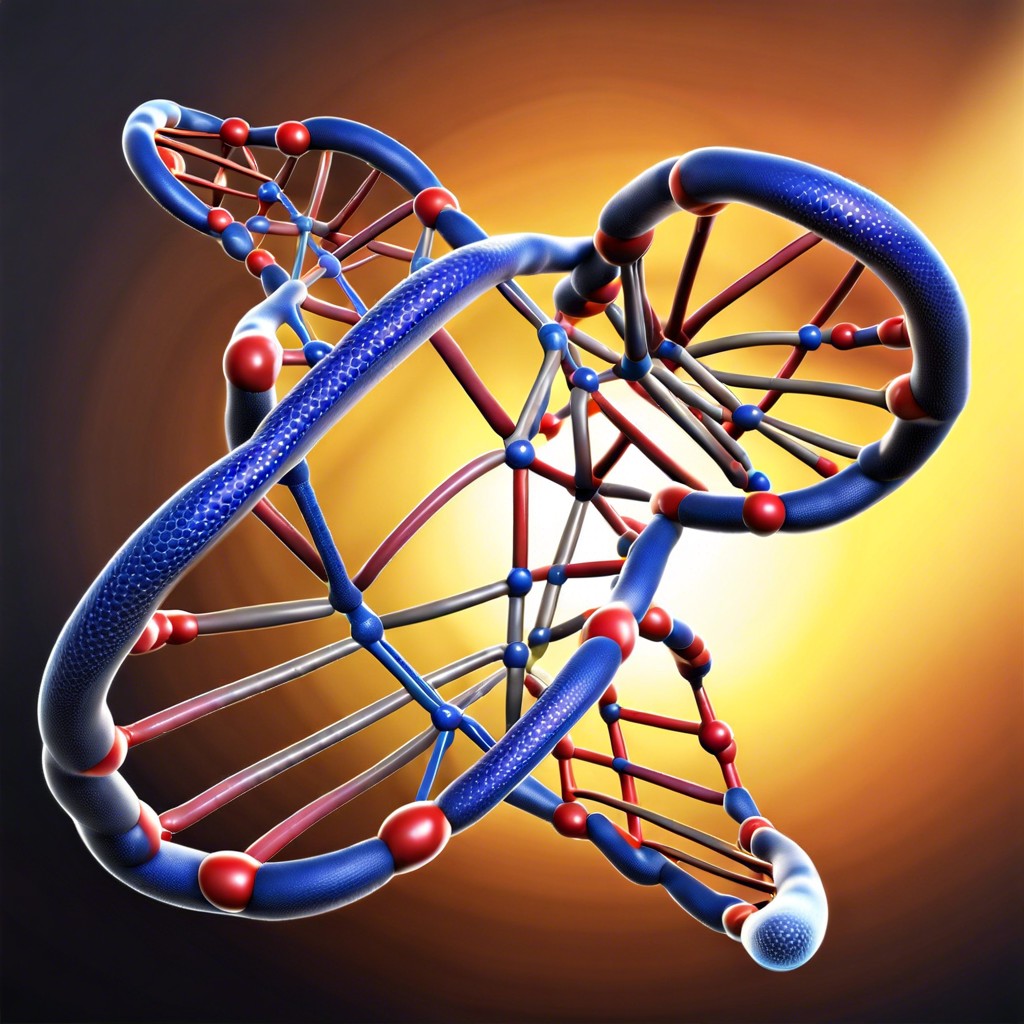Ever wondered what makes up the DNA and RNA molecules that carry our genetic information?
Key takeaways:
- Monomers of nucleic acids are nucleotides: sugar, phosphate group, nitrogenous base.
- Polymers of nucleic acids are created when monomers link together.
- Nucleotides are like building blocks for DNA and RNA.
- Nucleic acids include DNA and RNA, each with their own roles.
- DNA stores genetic information, RNA translates and transcribes it to build proteins.
Definition of Monomer

Alright, picture a monomer as a single LEGO brick. It’s simple, individual, and seems unassuming. Despite its humble appearance, it has the potential to connect with others and build something much more complex.
When we talk about monomers in the world of nucleic acids, we’re referring to nucleotides. These are the building blocks. Think of them as bite-sized snacks for your DNA, the ultimate picky eater.
- These little guys are composed of three parts:
- A sugar (think glucose but sassier)
- A phosphate group (like the handle on your LEGO brick – it’s how everything sticks together)
- A nitrogenous base (the quirky, colorful sticker that gives each nucleotide its personality)
Simple as that. Each of these small components, when joined in a series, create the long chains of nucleic acids we all love and need. The process is like making the world’s longest and nerdiest daisy chain.
Definition of Polymer
Okay, so you know how those fridge magnets stick together to form words? Polymers are like that, but instead of magnets, we have smaller units called monomers. When these monomers link up, they create long chains.
Here’s the fun part:
- Imagine a chain of paperclips. Each paperclip is a monomer.
- When connected, they form one long paperclip chain. That’s a polymer!
Polymers can be found all around us—from the rubber in your sneakers to the plastic in your water bottle. In our case, we’re talking about the polymers of nucleic acids, like DNA and RNA. These polymers are built from monomers called nucleotides, which we’ll get to next.
Easy, right? Now, let’s dive deeper.
Nucleotides As Monomers of Nucleic Acids
Nucleotides are like the building blocks of Lego for nucleic acids. Think of them as the small units that, when snap-locked together, create the long chains of DNA and RNA.
- Here’s what makes up a nucleotide:
- A sugar molecule – usually ribose in RNA or deoxyribose in DNA. It’s the sweet part!
- A phosphate group – like the glue that holds everything together.
- A nitrogenous base – available in four distinct flavors: adenine (A), thymine (T), cytosine (C), and guanine (G) for DNA; RNA swaps thymine for uracil (U).
When nucleotides join forces, a fantastic chain reaction occurs! The phosphate group of one nucleotide links to the sugar of another. It’s like a conga line, but with a lot more chemistry involved.
So every time you think about your genetic code, remember it’s all just a fancy, microscopic Lego set, built from these nifty little nucleotides. Science never looked so playful!
Types of Nucleic Acids: DNA and RNA
Think of nucleic acids as the VIPs of the cellular party. We’ve got two headliners: DNA and RNA.
DNA is like the meticulous record keeper, storing all the genetic information. It’s double-stranded and forms the famous double helix. This structure resembles a twisted ladder, with rungs made of base pairs held together by hydrogen bonds. Its primary job is to ensure that the genetic information is passed on accurately during cell division.
RNA, on the other hand, is like the party planner. It comes in several types, each playing a unique role. Single-stranded and more flexible than DNA, RNA helps turn the genetic instructions in DNA into actual proteins through processes like transcription and translation. Remember, without RNA, the cell’s blueprint would just gather dust!
In short, DNA is the long-term information storer and RNA is the dynamic doer, making sure the cell’s operations run smoothly, much like a well-orchestrated parade.
Function of Nucleic Acid Polymers
DNA and RNA are the dynamic duos of the cellular world, each with their own superpowers.
DNA holds the blueprint of life, storing genetic information. Imagine it as the meticulous architect, ensuring everything from eye color to snack cravings.
RNA, on the other hand, translates and transcribes this genetic info. Think of it as the busy project manager making sure the construction crew (ribosomes) knows exactly what to build – proteins!
Proteins are the building blocks for almost everything in your body. Without DNA and RNA, you’d be a recipe without a chef.
Mutation is another funky feature. Small tweaks in DNA can lead to adaptations and evolution. Change is key to survival, just ask Darwin!
Recap




